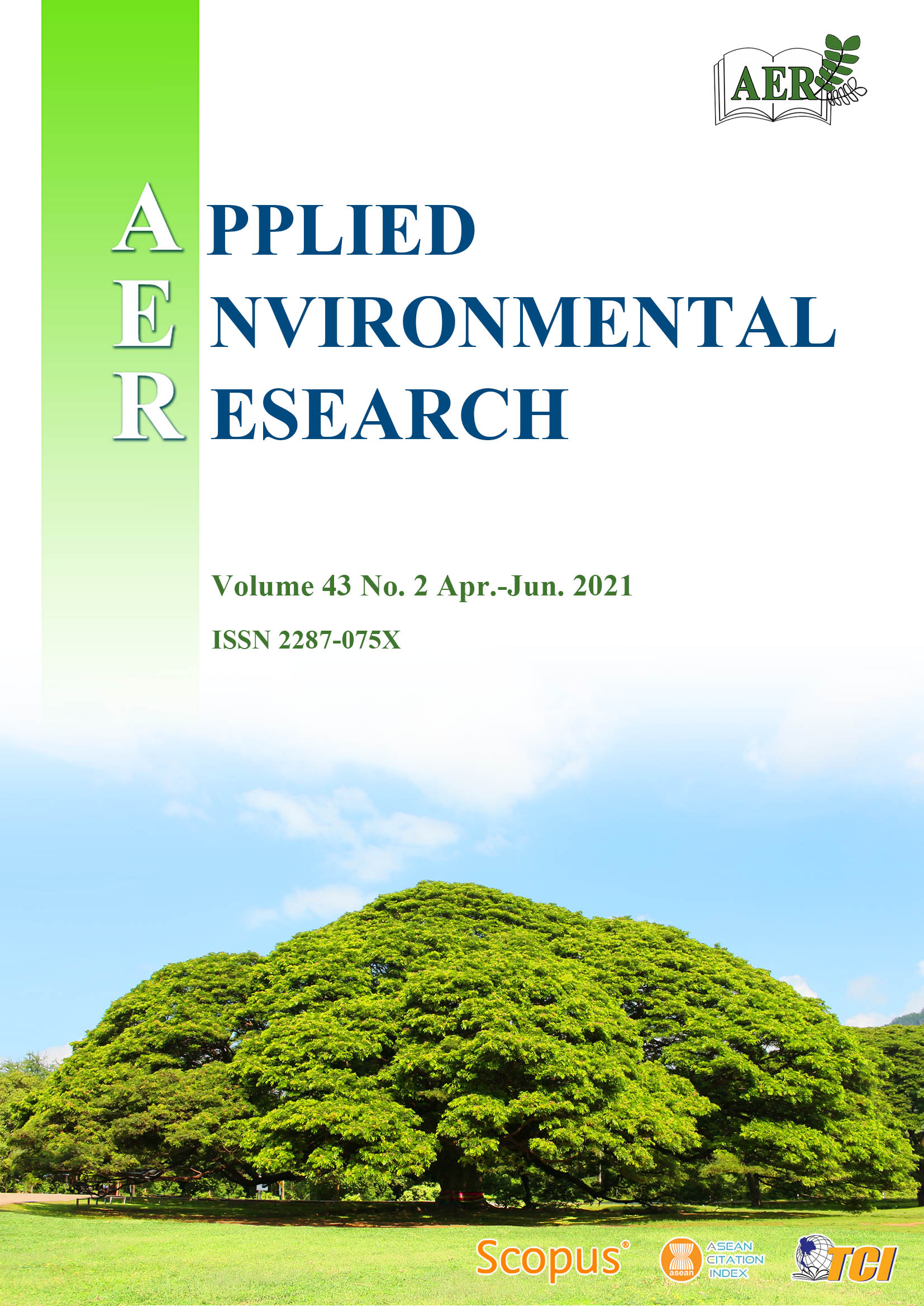Treatment of Iron from Groundwater by Ozonation: Influence of Hardness as a Scavenger
Main Article Content
Abstract
This study assesses the efficiency of using ozone technology to treat iron from groundwater while hardness acts as a radical scavenger. Batch experiments were conducted to determine the effects of initial pH 6, 7 and 8, and hardness of 300, 400 and 500 mg L-1 and kinetic analysis. The optimum conditions were found to be initial pH of 8 and hardness of 300 mg L-1. The removal efficiency of iron by ozonation was 99.97%, which was higher than that of air without ozone applied (83.67%). However, the presence of hardness and tert-butanol (TBA) had a negative effect on the oxidation of iron from groundwater. By increasing the carbonate hardness concentration, the oxidation rate of iron by ozone was reduced. The results of kinetic analyses indicated that the reactions of ozonation to remove iron from groundwater followed a pseudo-first order kinetic model with a rate constant of 0.0881 min-1, while air without ozone applied (aeration) was 0.0051 min-1. This finding suggests the potential use of ozone to remove iron from groundwater. Iron concentration from groundwater samples treated by ozonation have met the World Health Organization (WHO) guidelines (0.3 mg L-1).
Article Details

This work is licensed under a Creative Commons Attribution-NonCommercial 4.0 International License.
Published articles are under the copyright of the Applied Environmental Research effective when the article is accepted for publication thus granting Applied Environmental Research all rights for the work so that both parties may be protected from the consequences of unauthorized use. Partially or totally publication of an article elsewhere is possible only after the consent from the editors.

